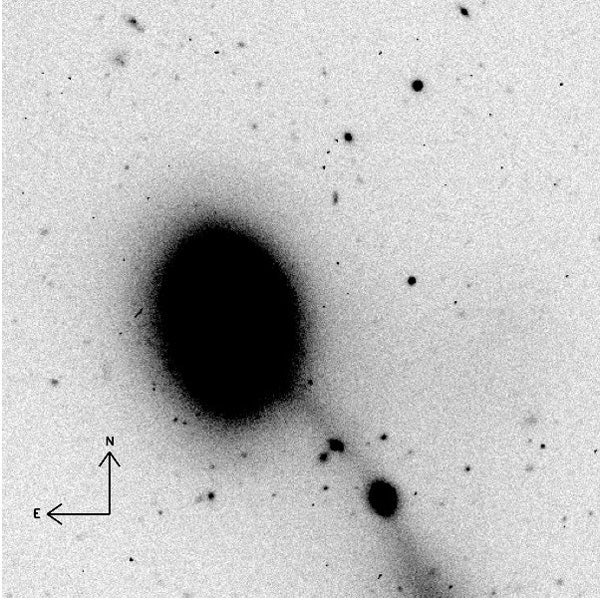Compact elliptical galaxies are small in size but have high brightnesses. There are two main theories as to how these are formed. The most popular scenario involves the stripping of a more massive galaxy, leaving a smaller remnant galaxy behind. The other scenario argues that cE galaxies are the smallest members of the standard class of elliptical galaxies.
Until now, the evidence supporting the stripping scenario has been circumstantial. The astronomers used the Sloan Digital Sky Survey (SDSS), one of the largest and deepest surveys of galaxies ever undertaken, and discovered two cEs and observed the process of stripping taking place. These images showed streams of stars being ripped from the cE galaxies and leaving small bright remnants behind. The scientists also discovered one of the cEs in high-quality archival data from the 4-meter Canada-France-Hawaii Telescope (CFHT).
“The stripping process is expected to be short-lived, in astronomical terms, but by studying the many galaxies in the SDSS, we have had the opportunity to find a couple in which this stripping has been caught in the act,” said Steve Phillipps from the University of Bristol. “We have found the ‘smoking gun.’”
Both of the cEs were found in small groups of galaxies. These are different from the big galaxy cluster environments in which previous researchers had looked for them. It may be that the cEs found in galaxy clusters were actually formed in small groups that later came together to become a galaxy cluster.
“Although these cEs show that stripping is certainly one way in which these galaxies form, it does not exclude other mechanisms,” said Huxor. An analysis of the many cE candidates found in the Bristol study will show what alternatives might also exist.
Compact elliptical galaxies are small in size but have high brightnesses. There are two main theories as to how these are formed. The most popular scenario involves the stripping of a more massive galaxy, leaving a smaller remnant galaxy behind. The other scenario argues that cE galaxies are the smallest members of the standard class of elliptical galaxies.
Until now, the evidence supporting the stripping scenario has been circumstantial. The astronomers used the Sloan Digital Sky Survey (SDSS), one of the largest and deepest surveys of galaxies ever undertaken, and discovered two cEs and observed the process of stripping taking place. These images showed streams of stars being ripped from the cE galaxies and leaving small bright remnants behind. The scientists also discovered one of the cEs in high-quality archival data from the 4-meter Canada-France-Hawaii Telescope (CFHT).
“The stripping process is expected to be short-lived, in astronomical terms, but by studying the many galaxies in the SDSS, we have had the opportunity to find a couple in which this stripping has been caught in the act,” said Steve Phillipps from the University of Bristol. “We have found the ‘smoking gun.’”
Both of the cEs were found in small groups of galaxies. These are different from the big galaxy cluster environments in which previous researchers had looked for them. It may be that the cEs found in galaxy clusters were actually formed in small groups that later came together to become a galaxy cluster.
“Although these cEs show that stripping is certainly one way in which these galaxies form, it does not exclude other mechanisms,” said Huxor. An analysis of the many cE candidates found in the Bristol study will show what alternatives might also exist.










